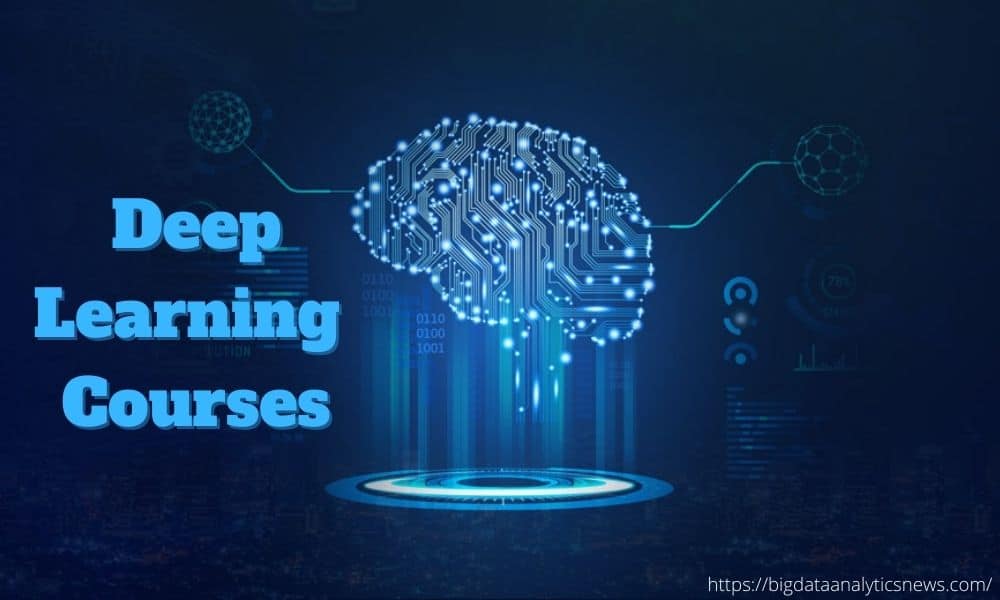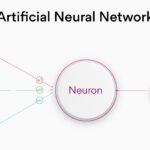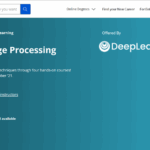My Unexpected Dive into Deep Learning: A Beginner’s Story
Remember that feeling? That mix of awe and mild confusion when you see headlines about AI doing incredible things – self-driving cars, computers beating chess grandmasters, even generating art from a few words? For years, I was just an observer, fascinated but feeling like it was all happening behind a curtain of complex math and obscure code. Deep Learning? It sounded like something only brilliant PhDs could ever hope to touch.
But then, a tiny spark of curiosity ignited. What if I could understand a little piece of that magic? What if I could build something, however small, that could learn? That spark led me down a path I never expected, a journey fueled by a well-chosen Deep Learning Course. And let me tell you, it was far less intimidating and much more rewarding than I ever imagined.
The "Before": A Sea of Jargon and a Dream
Before I enrolled in any Deep Learning Course, my knowledge was, well, superficial. I knew "AI" was big, "Machine Learning" was related, and "Neural Networks" had something to do with how the brain works, but that was about it. Every article I read seemed to throw around terms like "convolutional layers," "recurrent networks," "backpropagation," and "gradient descent" like they were common knowledge. My eyes would glaze over.
I wasn’t a math whiz, nor was I a seasoned programmer. My coding experience was basic at best. So, the idea of diving into Deep Learning felt like wanting to climb Mount Everest when my best hiking experience was a walk in the park. Yet, the desire to understand, to peel back the layers of this fascinating field, kept nagging at me. I wanted to move from being a passive consumer of AI news to an active participant, even if just in a small way.
Taking the Plunge: Finding My Deep Learning Course
The first big hurdle was figuring out where to start. A quick search for "learn Deep Learning" or "best Deep Learning Course" brought up a dizzying array of options. Free tutorials, paid platforms, university courses, specialized bootcamps – it was overwhelming.
My criteria were simple:
- Beginner-Friendly: I needed something that started from the absolute basics, assuming no prior Deep Learning knowledge.
- Practical & Project-Based: I learn best by doing. I wanted to build things, not just read theories.
- Clear Explanations: The course had to break down complex concepts into digestible, easy-to-understand pieces. No more jargon-filled lectures!
- Community Support: I knew I’d get stuck, so having a place to ask questions and connect with others was important.
After some careful digging and reading reviews (and maybe watching a few introductory videos), I settled on a Deep Learning Course that promised all of this. It wasn’t the cheapest, nor the most expensive, but it felt right. It focused on practical application using popular tools like Python, TensorFlow, and PyTorch, which I later learned are the industry standards.
The Early Days: Drinking from a Firehose (But with a Straw)
Let’s be real, the first few weeks felt like trying to drink from a firehose. There was a lot to take in! We started with the absolute fundamentals: what a neuron is (in the computational sense), how they connect, and what a basic neural network looks like.
I remember staring at lines of Python code, trying to understand why we were multiplying matrices or applying activation functions. My brain felt like it was doing gymnastics it wasn’t prepared for. Concepts like "loss function" and "optimizers" initially sounded like alien technology.
But here’s where a good Deep Learning Course truly shines. The instructors didn’t just present the math; they explained the intuition behind it. They showed visual examples, walked through simple analogies, and encouraged us to run the code ourselves, even if we didn’t fully grasp every line at first. The community forums were a lifesaver, where others, just like me, were asking the same "dumb" questions I was too afraid to voice.
The "Aha!" Moments: When the Magic Started to Unfold
Then, something clicked.
The first time I trained a simple neural network to correctly classify handwritten digits (the famous MNIST dataset), it was pure magic. I fed it an image of a "7," and it confidently predicted "7." It felt like I had just taught a machine to see and understand something for the very first time. My little script, my lines of code, had learned!
From there, the course progressively built up the complexity:
- Convolutional Neural Networks (CNNs): This was a game-changer for image recognition. Suddenly, my computer could "see" patterns in images, identify objects, and even differentiate between different breeds of dogs. Building my first image classifier for cats and dogs was incredibly thrilling.
- Recurrent Neural Networks (RNNs) for Sequences: We moved from static images to sequences, like text. Learning how to predict the next word in a sentence or generate simple text felt like teaching a machine to "think" in a new way.
- Natural Language Processing (NLP): This opened up the world of understanding human language. From sentiment analysis (is this review positive or negative?) to simple chatbots, the applications were mind-boggling.
- Transfer Learning: This was a huge revelation! Instead of training massive models from scratch, we learned how to "fine-tune" existing, pre-trained models for our specific tasks. It was like getting a highly skilled chef to cook your meal, but you just tell them your preferred spices. This made complex tasks much more accessible.
Each module in the Deep Learning Course built upon the last, gradually expanding my toolkit and understanding. The projects weren’t just theoretical; they were real-world scenarios, giving me a taste of what it’s like to solve practical problems with Deep Learning.
Beyond the Code: A New Way of Thinking
What surprised me most was that the Deep Learning Course didn’t just teach me to code or understand algorithms. It taught me a new way of thinking about problems. It introduced me to the iterative process of model building: defining the problem, gathering data, designing the model, training it, evaluating its performance, and then iterating to improve it.
I started seeing the world differently. When I looked at an image, I wondered how a CNN would process it. When I read text, I thought about how an NLP model might extract meaning. It wasn’t just about the technology; it was about the potential to build intelligent systems that could solve real-world challenges, from healthcare to environmental monitoring.
Is a Deep Learning Course Right for You? My Tips for Fellow Travelers
If my story resonates, if that spark of curiosity is flickering inside you, then yes, a Deep Learning Course might just be your next great adventure. Here are a few things I learned that might help you on your journey:
- Don’t Fear the Math (Too Much): While understanding the underlying math helps, many courses focus on the intuition and practical application. You don’t need to be a math genius to get started. The tools handle a lot of the heavy lifting.
- Embrace Python: Most Deep Learning is done in Python. If you’re new to it, dedicate some time to learning the basics before or alongside your course.
- Code, Code, Code: Watching lectures is good, but actually writing and running the code yourself is where the real learning happens. Break things, fix them, experiment.
- Start Small, Celebrate Wins: Don’t expect to build a revolutionary AI on day one. Celebrate the small victories – your first correctly classified image, your first text generation.
- Find Your Community: Whether it’s the course’s forum, a Discord server, or a local meetup, connecting with others is invaluable. You’ll learn from their questions and insights, and you won’t feel so alone when you hit a roadblock.
- Patience is Key: Deep Learning can be challenging. There will be moments of frustration. Be patient with yourself, take breaks, and remember why you started.
The "After": A World of Possibilities
Today, I’m no longer just an observer. Thanks to that initial Deep Learning Course, I can confidently build and deploy various Deep Learning models. I’ve worked on projects ranging from custom image recognition systems to tools that analyze text sentiment. It’s an empowering feeling to take an abstract concept and turn it into something tangible and useful.
The field of Deep Learning is constantly evolving, and the learning never truly stops. But having a solid foundation from a well-structured course has given me the confidence to keep exploring, keep building, and keep pushing the boundaries of what I thought was possible.
If you’ve ever felt that pull towards understanding AI, towards building something smart, then I wholeheartedly recommend finding a Deep Learning Course that fits your needs. It’s a journey of discovery, challenge, and ultimately, immense reward. Who knows what amazing things you’ll build?



